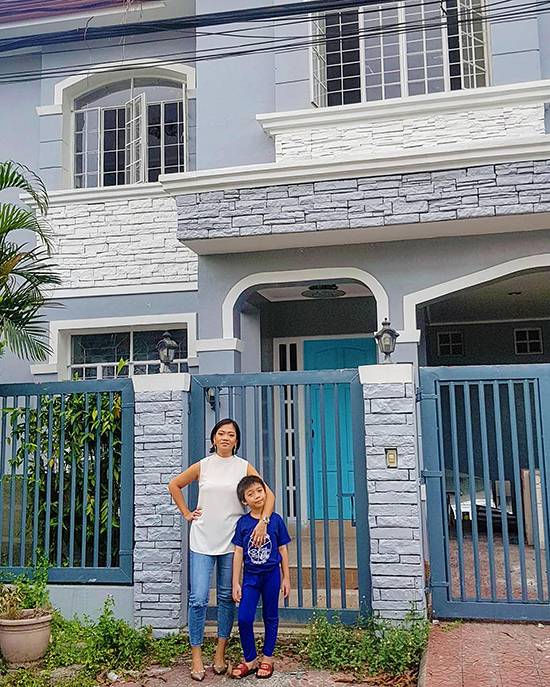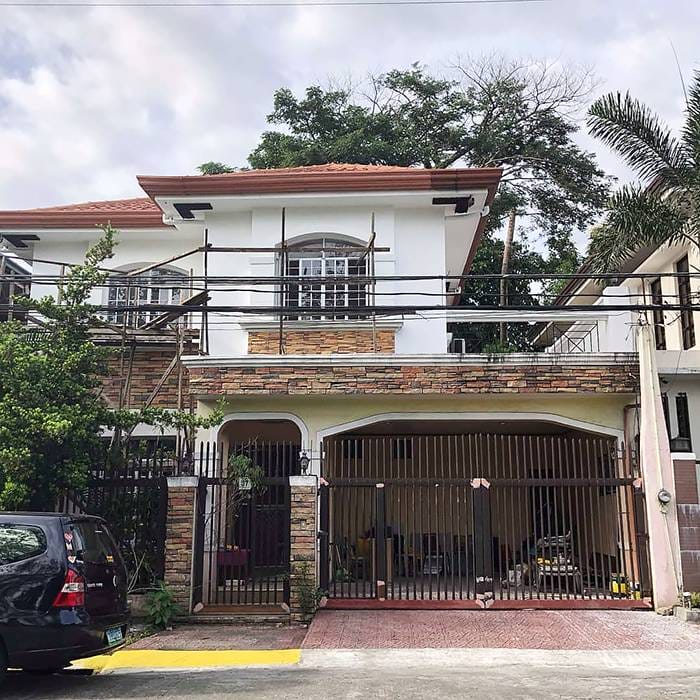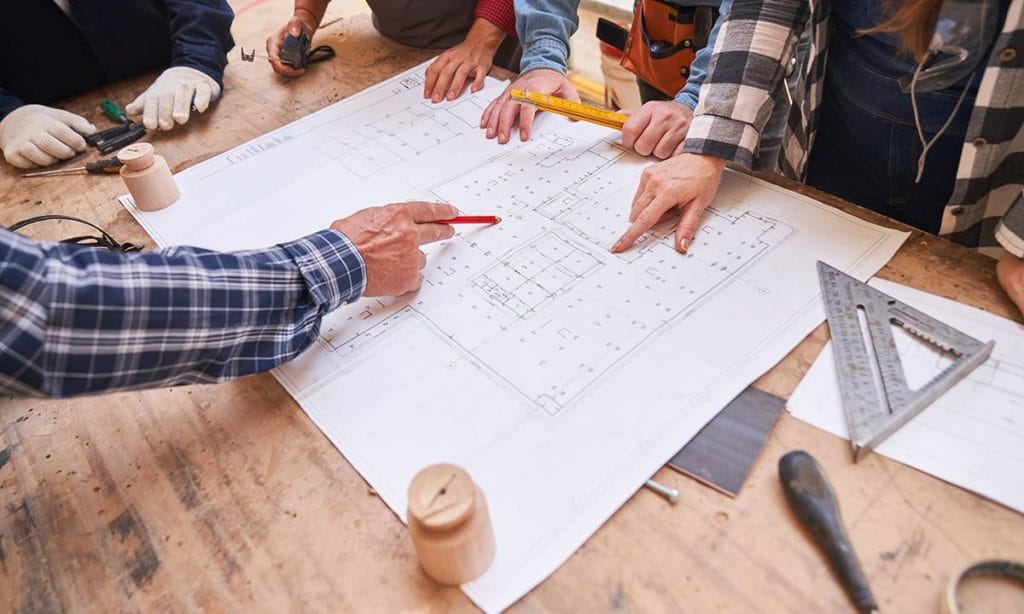“Whatever good things we build end up building us.” – Jim Rohn
Where we feel most ourselves, where we are most unpretentious, uninhibited, and unencumbered with the world: that is home. Everyone, regardless of age, socio-economic status, profession, or education always has an idea of the kind of home they wish to build, inhabit, and make their own. No matter how simple, grand, kitschy, modern, or minimalist it is – each person has some “ideal” of the kind of dwelling space that they dream about, work towards, and (as in our case, fortunately) turn into reality.
Constructing one’s dream home—or the closest one can get to the dream—is not without its set of challenges and compromises. In the end, it is what you find most acceptable and most uniquely yours that you end up creating. As with most spaces we build, we grow with each layer of brick, each coat of paint, and each furniture that we put into its designated place. In our quest to construct the place we will be most at peace; we found that the process was in itself a journey of tranquility and acceptance.
Peace is at the core of our impetus to finally leave our comfort zone of 15 years, a small 53-square meter, two-bedroom condo near the two TV network giants. It was the only community our children had ever known. They began their life there, went to school there, grew up literally knowing every nook and cranny of the neighboring Kamuning, E. Rodriguez, and New Manila areas. Every weekend was an adventure to find whatever new restaurants have popped up in the Timog-Morato area, or to see which old and decrepit building had been transformed into a hubbub of new shops and cafes. It was, in every sense, the only home we’ve ever known since we moved there in 2004.

But as the children grew up and space became an issue, my husband and I realized it was time to move. Initially, our search grid was quite narrow. We did not want to leave the cozy radius of that part of Quezon City. We loved it there. We had everything we could possibly need there. We felt safe there. But in 2017, when we began our search, it became increasingly clear that our budget will never allow us to find a suitable home in that area. We knew we had to venture further out into Metro Manila’s version of suburbia—as far as Fairview, in fact—if we wanted to see better options.
It was a year of highs and lows, missed chances, health calamities, wrong decisions, and opportunistic developers before our luck would turn. In 2018, my sister found a property for sale in the village where she had just moved into a mere two years earlier – a sub-section of the Filinvest 2 area, closer to San Mateo really, than Quezon City, but thankfully still within the boundaries of Metro Manila. You may or may not believe in this sort of thing, but she “instantly felt” it was perfect for us the minute she saw the house and met the owner. Fast forward to a year later, and we finally moved into Casa del Mar—our beach-themed home of teals and greys, our not-so-little safe haven where we could—without fear —truly and honestly be our best selves.

Call it divine intervention, but what happened next truly proved to us that something greater was at work when we purchased and renovated our home.
But first…a tale of caution and trepidation.
The house was old—not ramshackle old, but old, nonetheless. We knew it would be a fixer upper. We understood what was ahead of us, and we really believed we were ready. But nothing quite prepares you for a journey that is not only baffling but also – and regrettably —mired with human folly. Our biggest lesson, and the first we had to learn in the one-year journey that was our renovation: get a trustworthy and transparent contractor. This is key in ensuring that while you endure some pains in the process, it will at least be tolerable and brief.
Initially, we wanted to save as much money as we could by buying the materials ourselves and just hiring workers on the side. But as we progressed through this system, we realized there are so many aspects to home building that we were not capable of handling ourselves. And so, we finally succumbed to the idea of hiring professional contractors to really look into what was possible within the time frame, the budget, and the vision that we eventually want to realize. I mentioned vision here because this was key to the transformation of the space.
While we had an ideal look in mind, when we really understood what the house could become, we had to shift this vision to something more realistic. My husband had always wanted something that was more traditional, with a lot of heavy wood furniture and structures. After careful consideration, we knew that it would not really suit the current layout: the living room was narrow, and the staircase was too ubiquitous. We had to create the illusion of space by using really light paint with some white accents to elongate narrow areas. As we progressed further into the project, I realized that the house was more French rustic in its bones. I consulted a friend who dabbled in interior design as well as furniture fabrication, and we both agreed the house could pull off a rustic, beachy vibe. This was the first big eureka moment for me, as I tried to painstakingly put a look together that would not alienate our mostly male household, but also create a space that is uniquely beautiful. These two considerations must be made to co-exist in order for the house to feel truly like home to all of the members of our family.
Thankfully, our contractor was on board. I mentioned that not only do you need one who is trustworthy, but one who is honest (brutally if need be), too. Often, in our discussions, our architect would temper my ideas with the harsh realities: this wall here cannot be taken down, this column here must stay if you want to keep the structural integrity, you cannot change the orientation of the door. But these limitations really pushed our creativity. My husband found ways to give me a wrap-around counter space in the kitchen because I cannot have my island. The carpenters built me a movable pantry cabinet because I cannot have a pantry “room.” These compromises truly stretched our imaginations, because we needed to shift our perspectives so often, there were times when I don’t even know what the end would look like. I just trusted the process.
And what a process it truly was as we began uncovering more issues with the original structure. Suddenly, we now have to fix the plumbing, re-adjust electrical wirings, change parts of the roof that had unexpectedly collapsed, and so many more details that proved to be expensive as well as stressful. We realized that renovating an existing house was more excruciating than building one from the ground up. But by then, it was too late to change our minds. So, we soldiered on, and finally, after more than a year of anxiety, emotional tension, and steadily depleting source of funds, we saw our house finished in June of 2019. The moment we stepped foot into our as of yet empty, gleaming, and immaculate living room, all our worries from the past year just dissipated into the walls that still smelled of fresh, dove-grey paint. We were home.
Today, four years into this home-building journey, there are still parts of the house that we have not been able to finish. I still don’t have my garden—not that I am much of a gardener—where I could have my morning coffee, we still have not lengthened the back perimeter wall to prevent the falling leaves from getting into the rain gutters, and we still have not been able to transform the balcony into a cozy oasis where I could possibly practice yoga. The work has not ended even after four years. And we have discovered so many more problems that need fixing. But are we in a rush to get to them? No. Are we happy with the outcome so far? Yes.
Here is the truth, the most glaring one that we realized once we’ve settled in: this may not be our ideal home, but this is our REAL home: a space that is not only ours on paper, but one that is ours because we built it together.
Remember that part about this whole process being divinely planned? Almost a year after moving in, COVID happened, and we all found ourselves suddenly stuck inside our homes for the next two years. What luck that we were spending it in such a beautiful place, with so much space to be creative, productive, and truly at peace? If that’s not a divine plan at work, then I don’t know what is.
“Whatever good things we build end up building us,” so writes Jim Rohn. And it’s true. We built a home, but it built our trust—in our contractors and suppliers, in each other, in our neighbors who helped where they can, and in the grand, divine plan that made this all possible in the first place. It also built us a life that we now enjoy, memories we can look back on, and dreams we can continue dreaming while we peacefully nestle under its roof.
Will we ever go through this again? Absolutely. But not anytime soon.

House building lessons
1. Learn to compromise. What you originally want may not work, so be prepared to adjust as much as you can, within your limits, of course.
2. Listen to the experts. Sometimes, we can be so fixated on our ideas that we forget that the experts know better. Trust that they have your best interest in mind, even if does not always align with your plans.
3. Do not scrimp on the materials. If you can’t afford it now, don’t do it yet. It is better to wait than to settle. It will prove more costly later on when you realize you actually wanted a sunroom instead of a patio.
4. Keep what is worth keeping. In the process of renovating our home, there were a few things we did not remove or change because they still suited our plans for the space. The balcony was one of them. While I really wanted a walk-in closet, having a balcony proved beneficial when COVID happened.
5. You are allowed to change your mind. Try on paint colors on the actual walls. Don’t settle for just samples and swatches. If you like it, keep it. If not, just say so. You will be staring at those walls for a long time, you have to like how they look.
6. Ask questions. When in doubt, when confused, when you don’t really understand what is going on, and when you have an idea that you think might work. Ask. For all you know, you have stumbled into something brilliant. Our dining room accent wall is an example.
7. This is a cliché, but it is so true: TRUST THE PROCESS. Everything will look like a hurricane in the beginning, but just wait until you see the end result.
